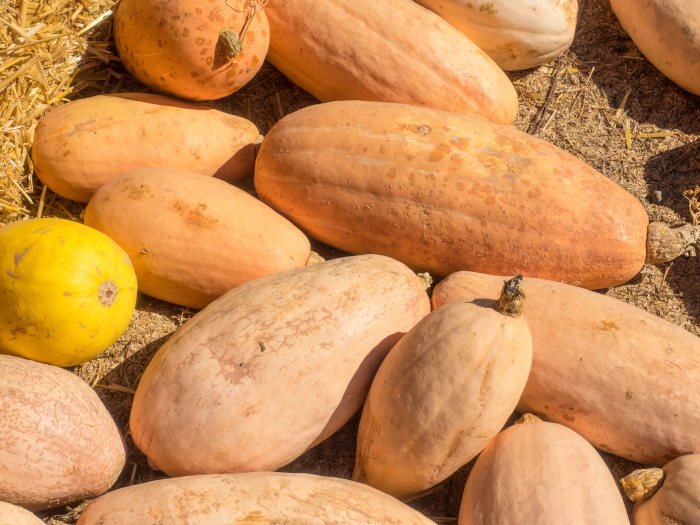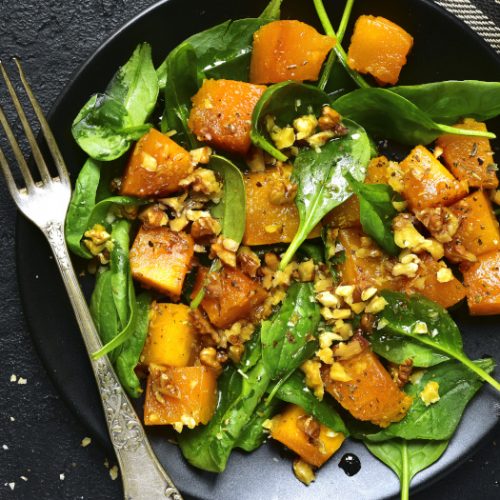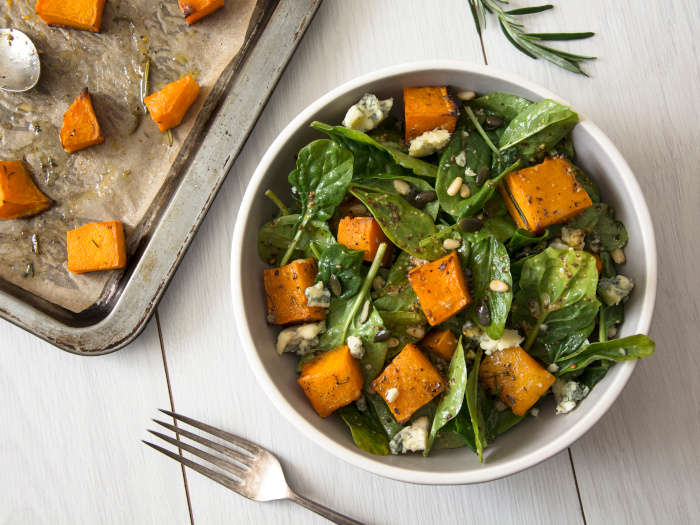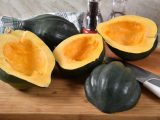Banana squash may not be as popular as its winter squash counterparts like the acorn and butternut squash due to its unwieldy shape and size. While the size of the squash may put people off, the fragrance of roasted banana squash wafting from the oven is what the fans of this squash variety swear by. Banana squash is nutrient-rich like other squashes and makes for a delightful side dish when paired very simply with butter and spiced with cinnamon or nutmeg.
If you do see it in your local farmer’s market or the supermarket aisle, don’t skip it. Here’s more on this not-so-well-known squash variety that is usually available throughout fall and winter.
What is Banana Squash?
Banana squash is a winter squash that resembles an oversize banana due to its elongated shape. Just like a banana, it has an earthy-sweet flavor, which is quite rich as compared to other squash varieties. It has a thick smooth rind that can be light pink, yellow, orange, green, or light blue, depending on the cultivar. The rind is inedible but the orange flesh is sweet and firm. However, the weight of a banana squash can be overwhelming to many chefs because it averages about 10 lbs (4.5 kgs) and can go up to 35 lbs (approx 16 kgs). Many supermarkets sell it in slices for convenience.
Banana squash, botanically classified as Cucurbita maxima, is a true winter squash that can be roasted, baked, grilled, and added to soups and stews in place of other varieties such as butternut and kabocha squash. To know more about winter squash and its nutritional benefits, you can head over to 11 Amazing Benefits Of Winter Squash.

Banana squash has an earthy taste and can be roasted, baked, or fried. Photo Credit: Shutterstock
Nutrition Facts
Like other winter squash varieties, banana squash is a rich source of beta-carotene (a precursor to vitamin A), vitamins C, and B6. It is also a good source of magnesium, potassium, and fiber. All winter squash types make for a great low-calorie, nutrient-rich food. One cup of cubed squash (116 g) contains 39.4 calories, 9.9 grams of carbohydrates, and 1.1 grams of protein. [1] [2] [3]
Health Benefits
While there are no specific studies on banana squash, winter squashes have long been known to benefit overall health due to their nutrient profile. Squashes are dense and filling food, low in calories as well as their glycemic load index. Including squashes in your everyday diet can help you manage weight as well as reduce the risk of heart diseases, diabetes, and inflammation. [4] [5] [6]
How To Cook Banana Squash?
Banana squash is versatile and goes very well with most fresh herbs including sage, rosemary, or thyme. You may bake, roast, or fry it and have it as a simple side dish. Roasted squash also makes for a wonderful warm salad for the fall and winter season. Here is the step-by-step method to prep this variety of squash for cooking.
How To Cut Banana Squash?
- Place the squash on the cutting board and slice it into half. You will need a sharp knife because the skin is very thick. If the squash is very big (over 35 lbs), it is best to wrap it in a towel and thump it hard on the ground to break it into manageable pieces.
- Discard the seeds. If you want, you can roast and eat the seeds. Cut the halved portions into thick slices. You can now roast these slices whole.
- For cubed squash pieces, further cut the slices into bite-size pieces. You can also microwave the cubes for 7-10 minutes, skin placed down. Only the flesh is eaten and the skin is discarded.
Try this warm banana squash salad recipe that can easily take pride of place on a Thanksgiving or Christmas dinner table.

Roasted Banana Squash & Spinach Salad Recipe
Ingredients
- 3 cups banana squash cubed
- 3 tbsp olive oil
- 2 tsp cinnamon powder
- 1/2 tsp nutmeg
- 1 lb baby spinach
- 3 tbsp pine nuts
- 2 tbsp goat cheese
- salt as per taste
Instructions
- First, you will need to roast the banana squash cubes. Line a baking tray with non-stick baking paper. Place the cubed squash and drizzle about 2 tbsp of olive oil. Add the cinnamon powder, nutmeg, salt, and toss to coat evenly.
- Cook for half an hour or till the squash is fork-tender. It should have a brownish or golden color.
- Meanwhile, lightly toast the pine nuts in a frying pan.
- To assemble the salad, place the baby spinach at the bottom of the salad bowl. Add the warm roasted banana squash, pine nuts, and crumble the goat cheese on top. Drizzle the rest of the olive oil on the salad and season with salt, if needed.
- For a savory version, you can omit the cinnamon and nutmeg powder. Add chopped garlic and mixed herbs to the squash before roasting it. This only makes for a wonderful vegetarian pizza topping.

For an easy fancy dinner at home, serve the salad with our Tender And Juicy Pork Loin Roast Recipe or Perfect Roast Chicken Recipe.
Selecting & Storing
To choose a good squash, make sure the rind is hard and blemish-free. If you find tender or moldy spots, the squash may be either immature or of poor quality. Banana squashes keep for longer than other varieties due to their hard rind. You can keep it for up to two months in a cool, dark, and well-ventilated area. Cut pieces should be stored in a refrigerator. They can last up to 4-5 days.


